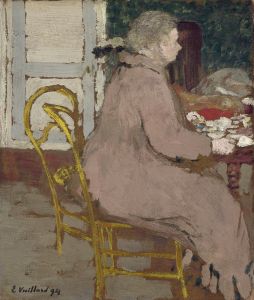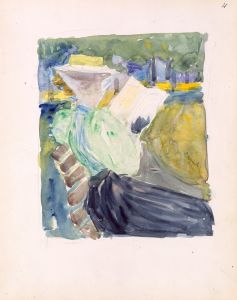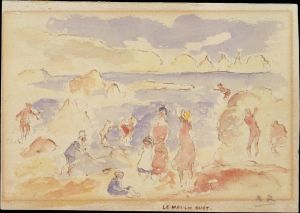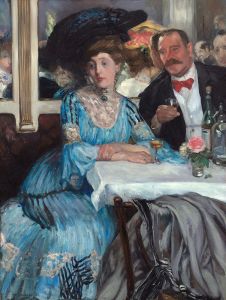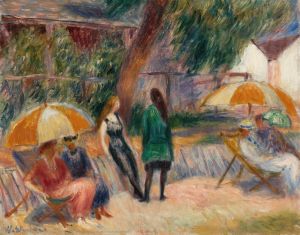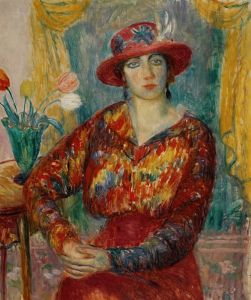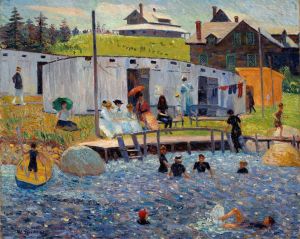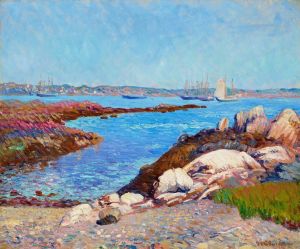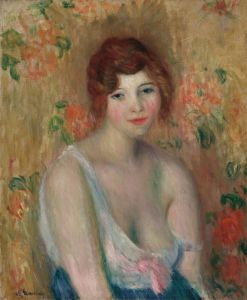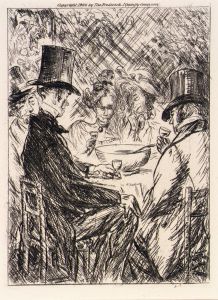
Couple at a Café
A hand-painted replica of William James Glackens’s masterpiece Couple at a Café, meticulously crafted by professional artists to capture the true essence of the original. Each piece is created with museum-quality canvas and rare mineral pigments, carefully painted by experienced artists with delicate brushstrokes and rich, layered colors to perfectly recreate the texture of the original artwork. Unlike machine-printed reproductions, this hand-painted version brings the painting to life, infused with the artist’s emotions and skill in every stroke. Whether for personal collection or home decoration, it instantly elevates the artistic atmosphere of any space.
"Couple at a Café" is a painting by the American artist William James Glackens, a prominent figure in the Ashcan School of art. This movement was known for its focus on depicting scenes of everyday life in New York City during the early 20th century, often highlighting the vibrancy and diversity of urban life. Glackens, who was born in 1870 and died in 1938, was a key member of this group and is celebrated for his ability to capture the nuances of social interaction and the atmosphere of his time.
The painting "Couple at a Café" exemplifies Glackens' interest in social scenes and his skill in portraying human interaction. Although specific details about the painting's creation date are not widely documented, it is consistent with Glackens' work from the early 1900s, a period when he was actively exploring themes of leisure and modernity. His works from this era often reflect the influence of French Impressionism, particularly the works of Pierre-Auguste Renoir, whom Glackens admired greatly. This influence is evident in his use of vibrant colors and loose brushwork, which bring a sense of immediacy and liveliness to his compositions.
In "Couple at a Café," Glackens captures a moment of casual interaction between a man and a woman seated at a café table. The setting is likely inspired by the bustling café culture that was becoming increasingly popular in urban centers like New York and Paris. The painting's composition draws the viewer into the intimate space shared by the couple, inviting speculation about their conversation and relationship. Glackens' attention to detail in the figures' expressions and body language adds depth to the scene, suggesting a narrative beyond the visible.
The painting is notable for its use of color and light, which are characteristic of Glackens' style. He employs a palette of rich, warm tones that convey the cozy, inviting atmosphere of the café. The interplay of light and shadow adds dimension to the scene, highlighting the figures and their surroundings. This technique not only enhances the realism of the painting but also underscores Glackens' ability to capture the essence of a moment.
"Couple at a Café" reflects Glackens' broader artistic goals of portraying modern life with authenticity and empathy. His work often focused on the middle and upper classes, depicting scenes of leisure and enjoyment that were accessible to many during the early 20th century. Through his art, Glackens offered a window into the social dynamics of his time, emphasizing the shared human experiences that transcend specific settings.
Today, William Glackens is remembered as a significant figure in American art history, and his works continue to be celebrated for their contribution to the development of modern art in the United States. "Couple at a Café" remains an enduring example of his talent for capturing the subtleties of human interaction and the vibrant spirit of urban life.





